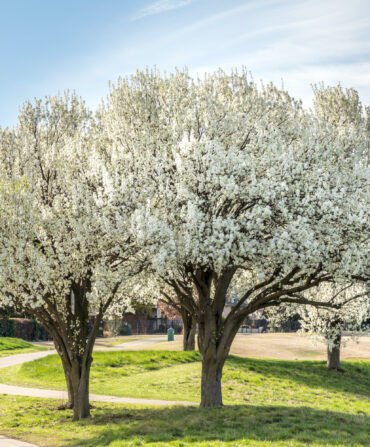When Ellen and Eason Leake bought 750 hilly acres near Oxford, Mississippi, in 1997, they considered it a simple timber investment. But one day Ellen decided to visit the tract. As she drove an old ridgetop logging road onto the property, she saw towering oaks and hickories among the pines. The views stretched on and on, and down below, in the wider valleys, she could imagine glittering lakes. “The land just revealed itself,” she recalls. “It was gorgeous.”
And so began Splinter Creek, a twenty-six-lot community that blends the Leakes’ love of place with their regard for modern design. More than four hundred acres of the property, named for a nineteenth-century settlement that once stood nearby, have been set aside for conservation. Hiking trails lace the forest, and spring-fed lakes, so clear they’re nearly Alpine blue, beckon paddlers and swimmers. Instead of chopping the land into pieces, architects drew lot lines that follow creeks and coves, and designed a dreamy plan of light-filled homes nestling into the natural topography.
“We do think of what we do as antidevelopment,” says architect Drew Lang, who works in New York but grew up in New Orleans. “The great majority of developments are antithetical to nature, and also to the way people actually want to live.”
Lang aimed to design a floorplan for Splinter Creek that instilled calm while still facilitating the chaos of daily life: the kids or grandkids racing about, or the dog shambling inside, wet from a dip in the lake. So his model home pairs private bedroom wings with expansive communal spaces: an airy great room, a screened porch, and more than six hundred square feet of decking—a nod to the traditional front porch. The design’s simple shape, galvanized metal roof, and cypress siding echo the farm sheds that dot northern Mississippi. And, Lang notes, the house is an updated dogtrot, with doors that open along each end of a hall to create a classic breezeway effect. (Buyers can also choose their own architect and draft lot-specific designs that still take the landscape into account.)
Ellen chose Lang after seeing the nature-forward aesthetics of a community he designed in New York’s Hudson River Valley. She links her uncluttered taste—midcentury woodworking master George Nakashima is a favorite—to her Tupelo upbringing and stylish mother-in-law. “She drove a Thunderbird back in the sixties, when there might have been two in town,” Ellen says. “The way she dressed, and the way she designed her house—there was something very contemporary about it.” Robert Saarnio, who directs the University of Mississippi Museum in Oxford and studied architectural history at Harvard, says Ellen’s vision will enliven a region dominated by historic home styles. “Splinter Creek is a fantastic incubator for brash, bold, unabashed contemporary design,” he says. “I’m thrilled that a place like it exists.”
For the Leakes, who enjoyed successful corporate careers, this second act as developers evolved organically. When they built their own Splinter Creek house in 2012, a marvel designed by the Texas firm Lake Flato to hover above the water’s surface, they envisioned a private weekend getaway. But it seemed too lonely, and they decided to turn Splinter Creek into a neighborhood. Ellen doesn’t want any fences, and she’s carved out social spaces—including a peninsular oasis with a fire pit and Adirondack chairs—for meeting neighbors. “The lakes are kind of our Main Street,” she says. “Around the next cove are friends and community.”








